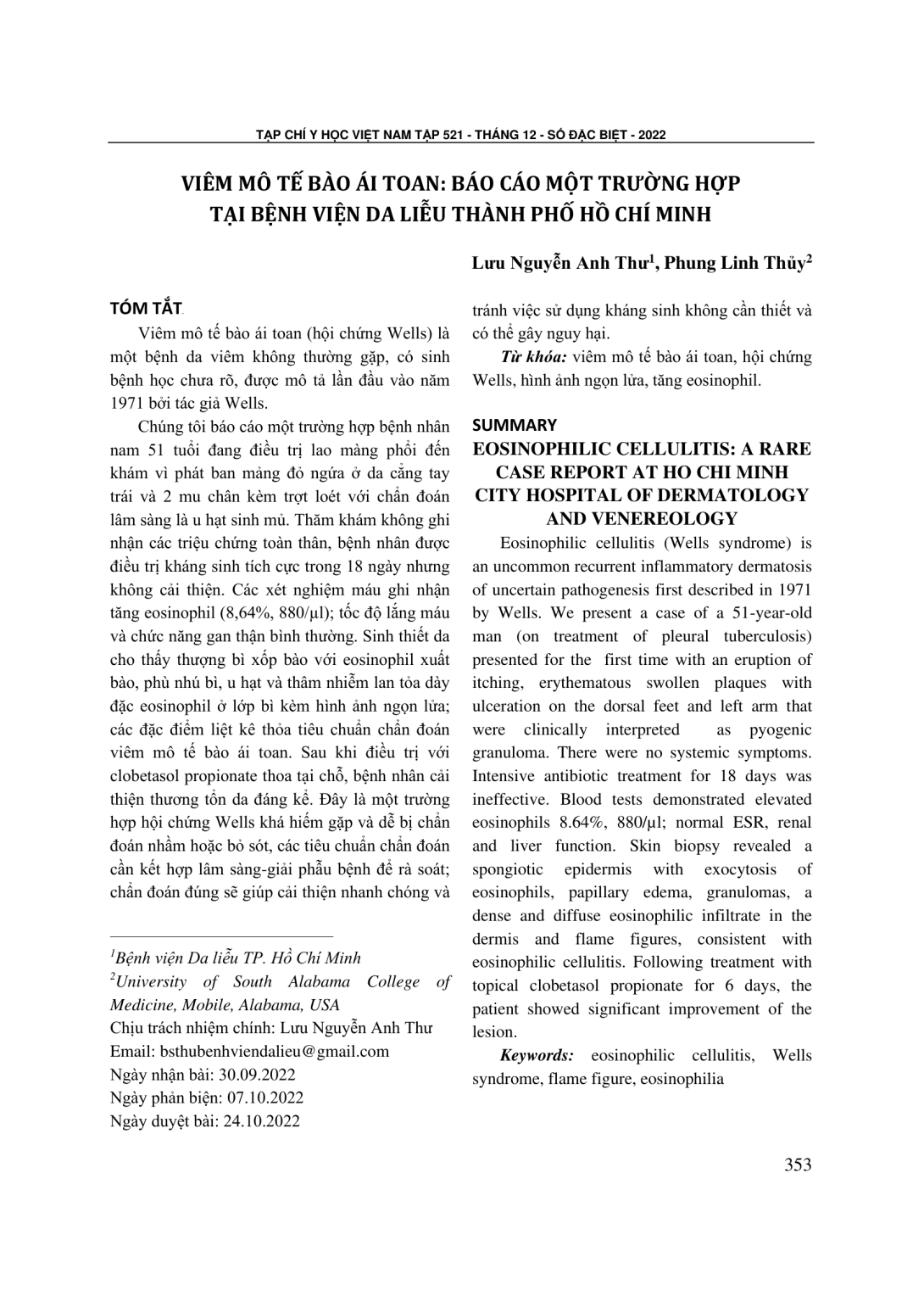
Báo cáo một trường hợp bệnh nhân nam 51 tuổi đang điều trị lao màng phổi đến khám vì phát ban mảng đỏ ngứa ở da cẳng tay trái và 2 mu chân kèm trợt loét với chẩn đoán lâm sàng là u hạt sinh mủ. Thăm khám không ghi nhận các triệu chứng toàn thân, bệnh nhân được điều trị kháng sinh tích cực trong 18 ngày nhưng không cải thiện. Các xét nghiệm máu ghi nhận tăng eosinophil (8,64%, 880/μl); tốc độ lắng máu và chức năng gan thận bình thường. Sinh thiết da cho thấy thượng bì xốp bào với eosinophil xuất bào, phù nhú bì, u hạt và thâm nhiễm lan tỏa dày đặc eosinophil ở lớp bì kèm hình ảnh ngọn lửa; các đặc điểm liệt kê thỏa tiêu chuẩn chẩn đoán viêm mô tế bào ái toan. Sau khi điều trị với clobetasol propionate thoa tại chỗ, bệnh nhân cải thiện thương tổn da đáng kể. Đây là một trường hợp hội chứng Wells khá hiếm gặp và dễ bị chẩn đoán nhầm hoặc bỏ sót, các tiêu chuẩn chẩn đoán cần kết hợp lâm sàng-giải phẫu bệnh để rà soát; chẩn đoán đúng sẽ giúp cải thiện nhanh chóng và tránh việc sử dụng kháng sinh không cần thiết và có thể gây nguy hại.
Eosinophilic cellulitis (Wells syndrome) is an uncommon recurrent inflammatory dermatosis of uncertain pathogenesis first described in 1971 by Wells. We present a case of a 51-year-old man (on treatment of pleural tuberculosis) presented for the first time with an eruption of itching, erythematous swollen plaques with ulceration on the dorsal feet and left arm that were clinically interpreted as pyogenic granuloma. There were no systemic symptoms. Intensive antibiotic treatment for 18 days was ineffective. Blood tests demonstrated elevated eosinophils 8.64%, 880/μl; normal ESR, renal and liver function. Skin biopsy revealed a spongiotic epidermis with exocytosis of eosinophils, papillary edema, granulomas, a dense and diffuse eosinophilic infiltrate in the dermis and flame figures, consistent with eosinophilic cellulitis. Following treatment with topical clobetasol propionate for 6 days, the patient showed significant improvement of the lesion.
- Đăng nhập để gửi ý kiến
